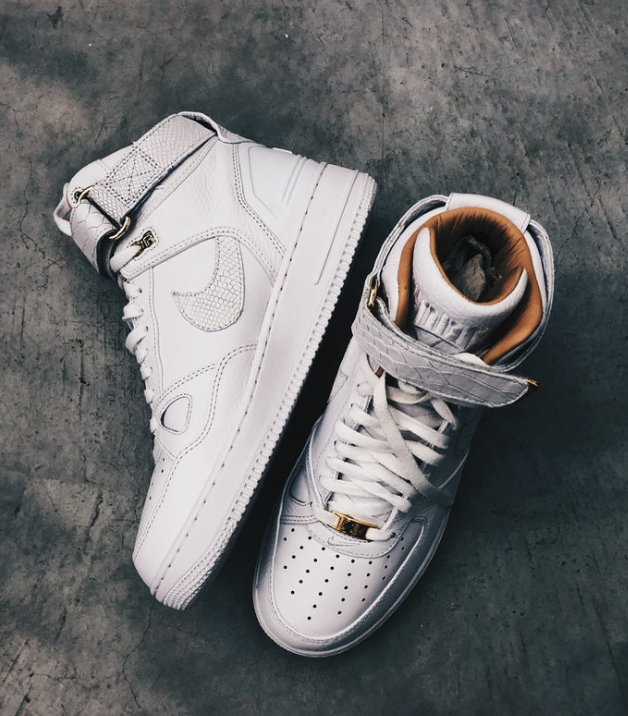by Nkem Iregbulem
More Americans are walking now than a decade ago. According to a report from the US Government Center for Disease Control, the percentage of men and women who report walking once for at least 10 minutes in the past week increased significantly from 2005 to 2015. A previous report from the CDC highlighted the various potential health benefits to walking and jogging. Physical activity cannot only help control weight, but also help lower one’s risk of type 2 diabetes, depression, heart disease, stroke, and certain cancers. With more people out walking, one would expect companies involved in the athletic shoe industry to benefit.
This trend in walking habits may therefore compel you to invest in some sneaker stocks. You have several choices: Adidas (ADDYY), VF Corp (VFC), ASICS (ASCCY), Nike (NKE), Foot Locker (FL), Wolverine (WWW), and Skechers (SKX). The VFC, NKE, FL, WWW, and SKX stocks are traded on the New York Stock Exchange, while, the ADDYY and ASCCY stocks are both traded over-the-counter.
Founded in 1920 and headquartered in Germany, Adidas is a very popular company that offers athletic products such as shoes, clothes, and equipment. The company’s products fall under two brand divisions: Adidas and Reebok. However, the Adidas division makes up the majority — around 90% — of the company’s sales. As the world’s second largest provider of athletic shoes and apparel, Adidas boasts a market cap of $44.78 billion and pays a dividend yield of 1.41%. The stock has a normal price-to-sales ratio of 1.82 and a price-to-book ratio of 5.69. It trades at 27.09 times trailing earnings and at 23.15 times forward earnings. The company’s revenue has been increasing since 2012, giving it a 3-year revenue growth rate of 13.44% and a 5-year revenue growth rate of 7.35%.
VF Corp is another company to consider. It was founded in 1899 and is based in Greensboro, North Carolina. The company designs and sells outdoor clothing, outdoor gear, activewear, athletic shoes, jeans, and work apparel. Its large product portfolio includes well-known brands like The North Face, Altra, Vans, and Timberland. VF Corp, which produces Altra Running Shoes, has a market cap of $37.04 billion and pays a dividend yield of 1.96%. The company’s stock has a price-to-sales ratio of 3.04, which puts it into the overpriced range. It trades at 48.65 times trailing earnings and at 29.76 times forward earnings. The stock also has a price-to-book ratio of 10.04. Close to 50% of the company’s revenue comes from its international business, and its revenue has been increasing each fiscal year since 2015. The company faces a negative 3-year revenue growth rate of -0.20% but a better 5-year revenue growth rate of 1.66%.
ASICS, founded in 1949 and headquartered in Japan, is a multinational company that designs, manufactures, and distributes sports equipment, activewear, athletic shoes, and outdoor products. Its business is organized into three divisions: athletic sports, sports lifestyle, and health/comfort. The company generates most of its revenue from sports shoes sales. ASICS has a market cap of $2.63 billion and pays a dividend yield of 6.34%. Its stock has a favorable price-to-sales ratio of 0.80 and has a price-to-book ratio of 1.57. It has a PE ratio of 34.93. The company enjoys a 3-year revenue growth rate of 5.31% and an even better 5-year revenue growth rate of 8.68%, bringing in around $400 billion in revenue in 2017.
Founded in 1964 and headquartered in Oregon, Nike has grown to become one of the world’s most well-known athletic shoe and apparel providers. Under brands such as Nike and Converse, the company designs and sells a large selection of athletic shoes, casual shoes, sports clothing, sports equipment, and accessories. Most of the company’s revenue comes from North America, followed by Western Europe, emerging markets, and China, with the rest coming from Japan and Central and Eastern Europe. As a powerhouse in the athletic shoe industry, Nike boasts a market cap of $128.89 billion and pays a dividend yield of 0.99%. With a price-to-sales ratio of 3.67, the stock is considered overpriced. It trades at 68.83 times trailing earnings and at 30.49 times forward earnings. Nike’s stock also has a price-to-book ratio of 13.14. The company’s revenue has been increasing each fiscal year since 2014, giving the company a 3-year revenue growth rate of 5.95% and a 5-year revenue growth rate of 7.53%.
Another option to consider is Foot Locker, a company that primarily sells athletics shoes and apparel to consumers worldwide. The company was founded in 1879 and based in New York. In addition to operating its various stores across the world, Foot Locker runs its e-commerce business through a number of sites, including footlocker.com, ladyfootlocker.com, and eastbay.com. The company offers its products across the world, including the United States, Canada, Australia, New Zealand, and Europe. Nike supplies the majority of Foot Locker’s products. Foot Locker has a market cap of $5.56 billion and pays a dividend yield of 2.90%. Its stock has a favorable price-to-sales ratio of 0.76 and a price-to-book ratio of 2.19. It trades at 13.41 times trailing earnings and at 10.93 times forward earnings. With its revenue increasing since 2014, Foot Locker has a 3-year revenue growth rate of 2.89% and a 5-year revenue growth rate of 4.71%.
You might also consider Wolverine, a company that designs and sells casual, work, and athletic footwear and apparel around the world. The company sells these products under brands like Sperry, Keds, Merrell, Saucony, and various others. Most of the company’s products come from third-party manufacturers in Asia. The company is founded in 1883 and based in Michigan. Wolverine has a market cap of $3.41 billion and pays a dividend yield of 0.89%. The stock has a normal range price-to-sales ratio of 1.53 as well as a price-to-book ratio of 3.67. It trades at 29.37 times trailing earnings and at 17.64 times forward earnings. The company has a negative 3-year revenue growth rate of -5.23% but a much better 5-year revenue growth rate of 7.45%.
Founded in 1992 and headquartered in California, Skechers offers a large selection of products including athletic, work, and casual shoes. Its products are sold in the United States, Canada, Asia, Central America, Europe, North America, and South America. In addition to its revenue from its footwear sales, the company also generates revenue from licensing the Skechers brand. Skechers has a market cap of $4.61 billion and does not pay a dividend yield. Its stock has a normal price-to-sales ratio of 1.02 and a price-to-book ratio of 2.35. The stock trades at 24.23 times trailing earnings and at 16.37 times forward earnings. With its revenue increasing each fiscal year since 2013, the company enjoys a 3-year revenue growth rate of 20.55% and a 5-year revenue growth rate of 21.68%.
So get out there and walk as much as possible. It will benefit your health and maybe benefit some athletic stocks in your portfolio.




